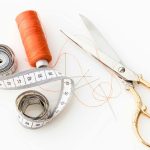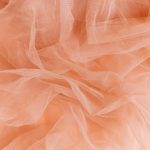Crepe, well-known for its unique texture and versatility, is a fabric that often intrigues those seeking to understand its composition.
Have you ever wondered what material lies behind the delicate drape and subtle crinkle of crepe garments?
Let's uncover the mystery behind this fabric that has captured the attention of fashion enthusiasts and designers alike, revealing the secrets that make crepe stand out in the world of textiles.
Table of Contents
Key Takeaways
- Crepe is made from various fabrics like silk, wool, or synthetic fibers, known for its lightweight and slightly wrinkled appearance.
- Crepe fabric offers benefits such as breathability, excellent draping qualities, wrinkle resistance, and easy care maintenance.
- Different types of crepe include Crepe de Chine, Georgette crepe, Wool crepe, Crepe satin, and Moss crepe, each with unique textures.
- Crepe's versatility makes it suitable for a range of garments and occasions, showcasing elegance and sophistication.
History of Crepe
Crepe, a versatile and delicate fabric, has a fascinating history that dates back centuries. Its cultural significance lies in its association with luxury and elegance across various civilizations. The evolution of crepe production showcases a journey of innovation and craftsmanship that has shaped its unique texture and appearance.
Crepe originated in Asia, where it was initially crafted from silk, symbolizing wealth and status. Over time, the production techniques spread to Europe, with French and Italian artisans perfecting the art of crepe-making. The delicate crinkled surface of crepe became synonymous with high fashion, making it a popular choice for evening wear and bridal gowns.
The industrial revolution marked a significant shift in crepe production, with the introduction of mechanized looms and synthetic fibers. This revolutionized the industry, making crepe more accessible to a wider audience. Today, crepe continues to be a staple in the fashion world, loved for its luxurious drape and versatility in creating everything from flowy dresses to tailored suits.
Types of Crepe Fabric
Exploring the world of crepe fabrics reveals a diverse range of textures and finishes that cater to various fashion preferences and design needs. When delving into the types of crepe fabric, you encounter a fascinating array of options that elevate any garment. Here are five remarkable types to contemplate:
- Crepe silk: Known for its luxurious feel and elegant drape, crepe silk adds a touch of sophistication to any outfit.
- Crepe wool: This fabric offers a blend of warmth and texture, making it ideal for tailored pieces and winter wear.
- Crepe chiffon: With its sheer and lightweight nature, crepe chiffon is perfect for creating ethereal and flowy designs.
- Crepe georgette: Offering a slightly heavier drape than chiffon, crepe georgette is versatile and commonly used in both formal and casual attire.
Each type of crepe fabric brings its unique characteristics, allowing designers and fashion enthusiasts to release their creativity and craft stunning pieces.
Characteristics of Crepe Material
One can easily recognize crepe material by its distinctive crinkled texture and subtle sheen. Crepe is known for its unique characteristics that set it apart from other fabrics. One key aspect of crepe is its durability. Despite its delicate appearance, crepe fabric is surprisingly strong and long-lasting, making it a reliable choice for various garments. The crinkled surface of crepe not only adds a touch of elegance but also helps to hide wrinkles and creases, making it a practical option for everyday wear.
Another notable feature of crepe is its breathability. The slightly textured weave of crepe allows for excellent airflow, keeping the wearer cool and comfortable in warmer climates. This breathability also makes crepe a great choice for layering in different seasons. Whether you're looking for a durable fabric that can withstand daily wear or a breathable option for added comfort, crepe material offers a versatile and stylish solution for a range of clothing needs.
How Crepe Differs From Other Fabrics
Crepe stands out for its unique texture that sets it apart from other fabrics, giving it a distinct look and feel.
This difference allows crepe to be incredibly versatile, making it suitable for a wide range of uses in fashion and decor.
Exploring these characteristics will shed light on why crepe is a popular choice for many projects.
Crepe's Unique Texture
With its distinctively crinkled surface and airy feel, crepe stands out among fabrics for its unique texture that sets it apart from traditional smooth textiles. Crepe's delicate drape and subtle sheen enhance its elegance, making it a favorite choice for various garments and accessories. Here are five reasons why crepe's texture is unmatched:
- Textural Depth: Crepe's surface offers a multi-dimensional appearance that adds interest to any outfit.
- Subtle Ridges: The fine ridges in crepe create a tactile experience that sets it apart from flat fabrics.
- Flowing Movement: Crepe's lightweight nature allows for graceful, flowing movements that accentuate the wearer's silhouette.
- Airy Comfort: The breathable quality of crepe makes it comfortable to wear in various climates.
- Unique Wrinkle Resistance: Despite its crinkled texture, crepe often resists wrinkles, maintaining a polished look throughout the day.
Crepe's Versatile Uses
As I explore the versatility of fabrics, one unique material that stands out for its distinctive qualities is crepe, presenting a range of uses that set it apart from traditional textiles. Crepe isn't only favored in fashion for its elegant drape but also finds its place in crafting projects. Its delicate texture and ability to hold intricate shapes make it a popular choice for creating stunning decorations, such as flowers and decorative elements in various crafts.
Additionally, crepe extends its versatility beyond the domain of art and fashion into the culinary world. Chefs and home cooks alike utilize crepe in cuisine, where its thin, light texture serves as the perfect base for both savory and sweet dishes, showcasing its adaptability and unique appeal in different creative fields.
Uses of Crepe in Fashion
When styling outfits, I often turn to the versatile fabric of crepe for its elegant drape and texture that adds sophistication to any fashion piece. Crepe's unique characteristics make it a favorite choice in the fashion world.
Here are five exciting uses of crepe in fashion:
- Crepe Couture: Crepe is commonly used in creating elegant couture pieces due to its luxurious appearance and ability to hold structured designs.
- Flowy Dresses: Crepe's graceful drape makes it perfect for creating flowy dresses that move beautifully with every step.
- Tailored Suits: Crepe's crisp texture lends itself well to tailored suits, adding a touch of sophistication to professional attire.
- Crepe Accessories: From scarves to handbags, crepe accessories are a stylish addition to any outfit, offering a subtle yet chic touch.
- Evening Gowns: Crepe's ability to hold intricate details and embellishments makes it a popular choice for creating stunning evening gowns that exude glamour.
Care Instructions for Crepe
Taking care of crepe fabric is essential to maintain its quality and longevity. When it comes to washing crepe garments, I recommend using a gentle machine wash on a delicate cycle to make certain damage to the delicate fibers. It's best to turn the garment inside out before placing it in the machine to minimize friction and potential snags. Additionally, using a mild detergent will help preserve the fabric's texture and color vibrancy.
After washing, avoid wringing out the garment to remove excess water as this can distort the fabric. Instead, gently squeeze out the water and then lay the crepe item flat to dry. Avoid hanging it up, as this can cause the fabric to stretch out of shape.
When it comes to ironing crepe fabric, using a steam iron on a low setting is ideal. The steam will help remove any wrinkles without damaging the delicate material. Always test a small, inconspicuous area first to make certain the iron isn't too hot for the fabric. By following these care instructions, you can keep your crepe garments looking beautiful for years to come.
Sustainable Practices in Crepe Production
To understand the environmental impact of crepe production, let's explore sustainable practices that can be implemented in the manufacturing process.
- Eco-friendly manufacturing: Utilizing renewable energy sources, such as solar or wind power, to reduce carbon emissions.
- Ethical sourcing practices: Ensuring that raw materials are ethically sourced, supporting fair trade and workers' rights.
Implementing water recycling systems to minimize water wastage during production.
Using natural dyes and chemicals that are non-toxic and biodegradable to reduce pollution.
Supporting local communities by sourcing materials locally, reducing transportation emissions.
Frequently Asked Questions
Can Crepe Fabric Be Easily Dyed or Printed On?
Dyeing techniques and printing methods work well on crepe fabric due to its absorbent nature and texture. The material takes color beautifully, allowing for vibrant and intricate designs to be easily incorporated into the fabric.
What Is the Average Cost of Crepe Fabric Compared to Other Materials?
When comparing costs, crepe fabric may be pricier than some materials due to its quality. Its unique texture and drape can make it worth the investment. Consider the benefits of crepe for a luxurious and elegant look.
Is Crepe Fabric Suitable for All Seasons or Is It Better for a Specific Season?
For all seasons, crepe fabric offers versatility. Its breathability makes it comfortable for layering. Styling tips include mixing textures and colors. I find it perfect year-round, adapting easily to different climates.
Are There Any Specific Design Techniques That Work Best With Crepe Fabric?
When it comes to draping techniques, crepe fabric is a dream to work with! Its fluidity enhances any design. I love experimenting with color blocking and adding embellishments to create stunning pieces.
How Does the Production Process of Crepe Fabric Impact the Environment?
The production process of crepe fabric can have a significant impact on sustainability. It's important to explore eco-friendly alternatives to reduce environmental harm. Implementing practices like water recycling and using organic fibers can help lessen the ecological footprint of crepe production.
- Can You Recycle Nonwoven Polypropylene Bags? - July 11, 2025
- How to Care for Your Nonwoven Polypropylene Tote Bags - July 11, 2025
- Understanding SMS, SMMS, and SMMMS Nonwoven Composites - July 11, 2025






